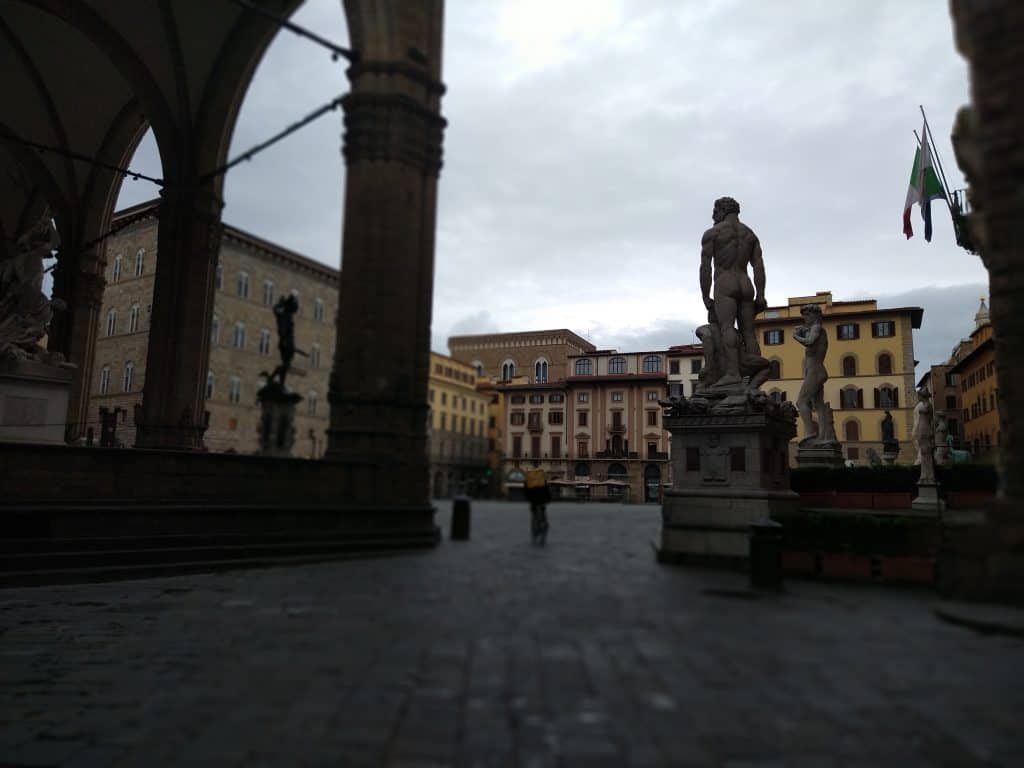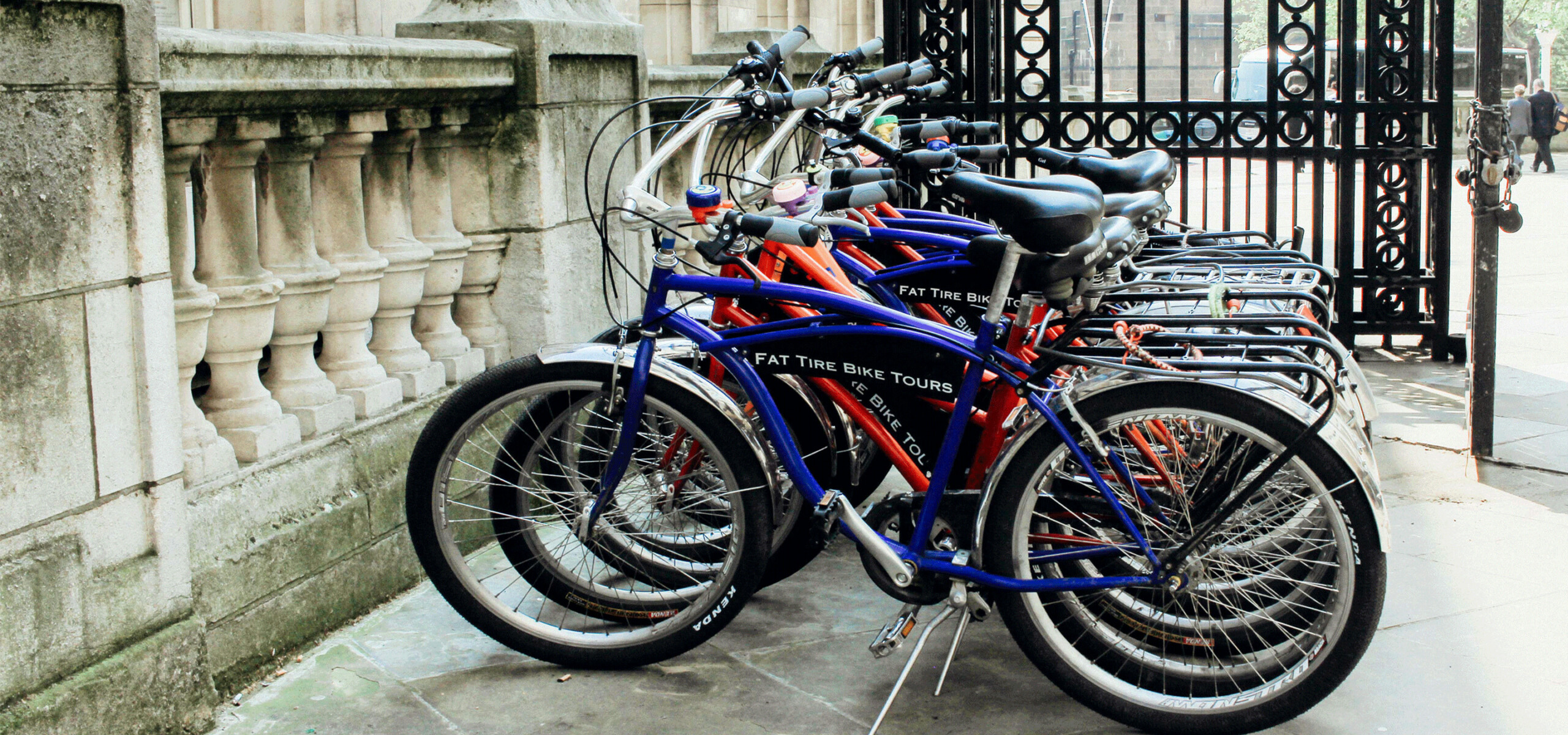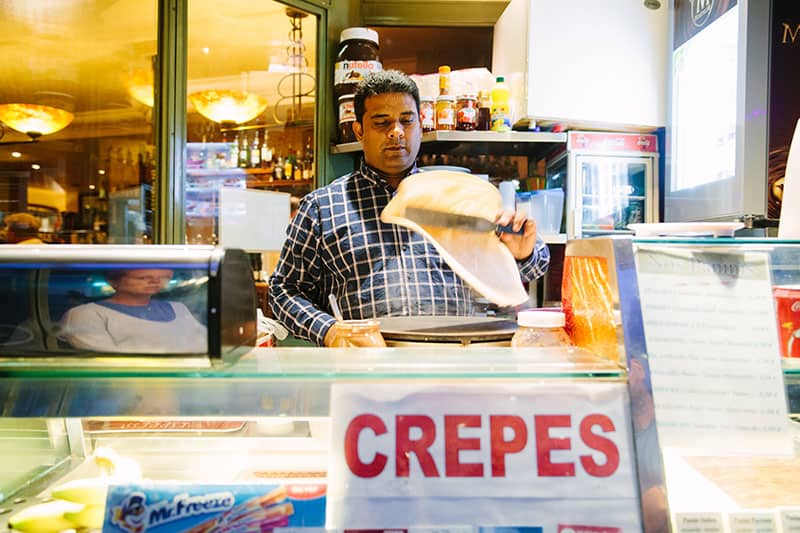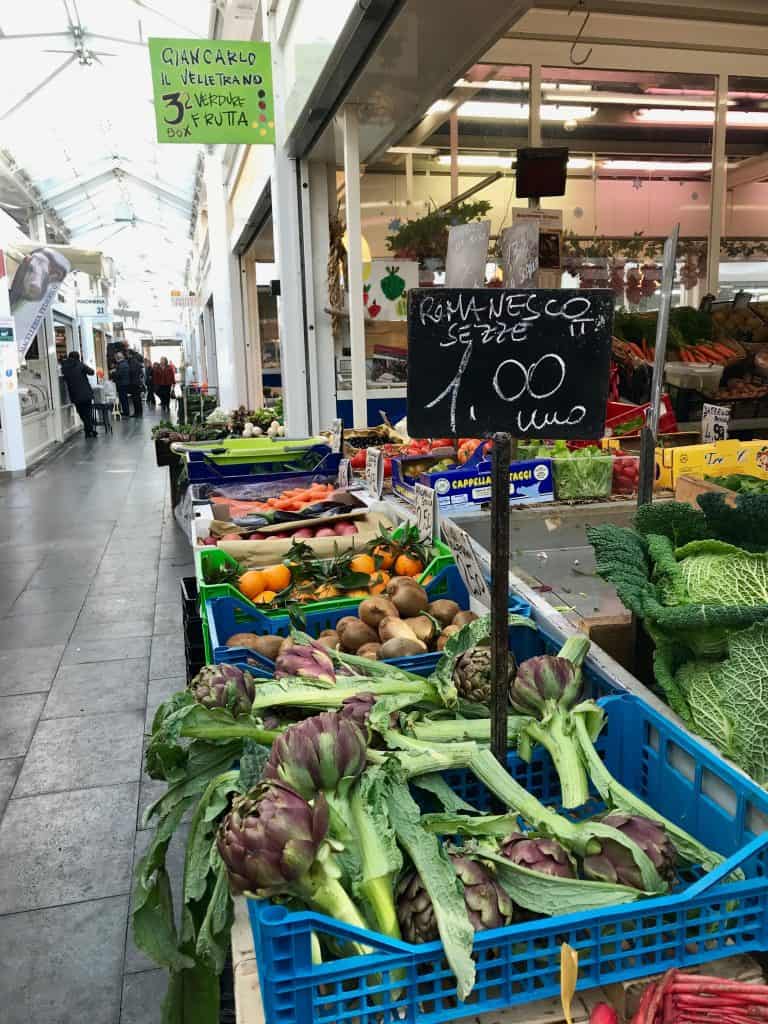What do you know about Italian olive oil?
If you’ve experienced our Florence Food Tour, you know it’s really tasty. Maybe you ate a bruschetta or two on your Tuscany trip. And I’m sure you enjoyed it!
Tasting olive oil straight is the best way to judge its quality. You can do it pretty easily by yourself (if you try a guided lesson, though, you will learn lots of useful stuff).
Put a little bit of oil in a small glass and warm the glass in one hand, while covering it with the other. Now, put your nose into the glass to smell the aromas. Hopefully, it reminds you of things like fresh olives, grass, bananas, and apples. (Hay, cardboard, vinegar, mud, and mustiness are some of the aromas that indicate olive oil has gone bad.)
The flavor matters a lot too. Try the green Tuscan oil, which is quite ticklish on the tongue and tastes like fresh artichokes. Or, maybe try the golden southern oil, from Puglia, which has a smoother taste. The taste depends on the variety of the olive, the terrain, and the climate.
The way the olive oil is made is the same for every good one. After olives are picked and washed, they’re crushed – sometimes between two big stones, but now more commonly by steel blades. The resulting paste is stirred to release the oil droplets in a process called maceration, before being spun in a centrifuge to pull out the oil and water.
After the water is removed, what is left is olive oil. The picking process might be pretty different though. In Tuscany, we pick the olives from the trees, while they’re still greenish (that’s why they have that “fresh grass” flavor), while in Puglia farmers wait for olives to fall naturally on big nets on the ground. Therefore, this oil tastes more mature. If you manage to try them one after the other, the difference will be pronounced. But I bet you won’t be able to decide which one you like the most!
Italians cook pretty much everything with olive oil. We use it to cook, to fry, and to make cakes; we even make ice cream from it (have you tried it? It’s amazing!). And one gourmet chef even invented crème brulée with olive oil on the side; it’s a fancy mix.
There’s clearly so much you can do with olive oil. Why do we keep choosing it over and over again, even when we have cheaper products?
Well, it’s not only because of its flavor. Olive oil is one of the healthier products on Earth (and yes, we keep telling that to ourselves while eating fried stuff). I will always suggest using olive oil for cooking. Believe it or not, it is lighter than any other oil. Replace other fats like butter with at least two tablespoons of extra virgin olive oil every day, eat lots of veggies, and go for a walk.
So, what makes olive oil so good for health? Well, olive oil is extremely high in oleic acid, which is used to reduce blood pressure. Olive oil also contains many antioxidants including vitamin E, carotenoids, and Oleuropein.
Olive oil is a major “fountain of youth.” It contains a high amount of polyphenols, which help cell renewal. That’s why there is also a large market for olive oil soaps and skin care products. (However, do not use olive oil for your suntan. This is actually the most dangerous thing you can do! It will burn you.)
And for these benefits, be sure that you’re using a true extra virgin olive oil. Lots of cheap products are the result of a mix of different oils or chemicals, or are made with non-Italian olives. Of course, Greek or Turkish oil might be good, but cheap imported products probably aren’t the same thing.
So, how do you decipher quality when a tasting is not possible, like in a supermarket? I have two tips. One: do not rely on the price. Always check the tag and the ingredients. But if it’s suspiciously cheap, leave it there. Two: treat yourself! Buy the “DOCG” products and you’ll be safe, sound, and happy.
The very last thing I want to share with you about oil is about its storage. Oil, because of its chemical composition, suffers a lot from oxygen. Therefore, if you buy a big bottle, either you finish it really quickly, or you fill a lot of little bottles and seal the others, storing them in a dark and dry place, and opening them only once you finish the previous one. That way, they will maintain their properties much better.
Learn more about Italian foods and culture by joining a Fat Tire Tour in Milan, Florence, or Rome!
[maxbutton id=”1″ url=”https://www.fattiretours.com/italy” text=”Book a Fat Tire Tour in Italy!” ]




